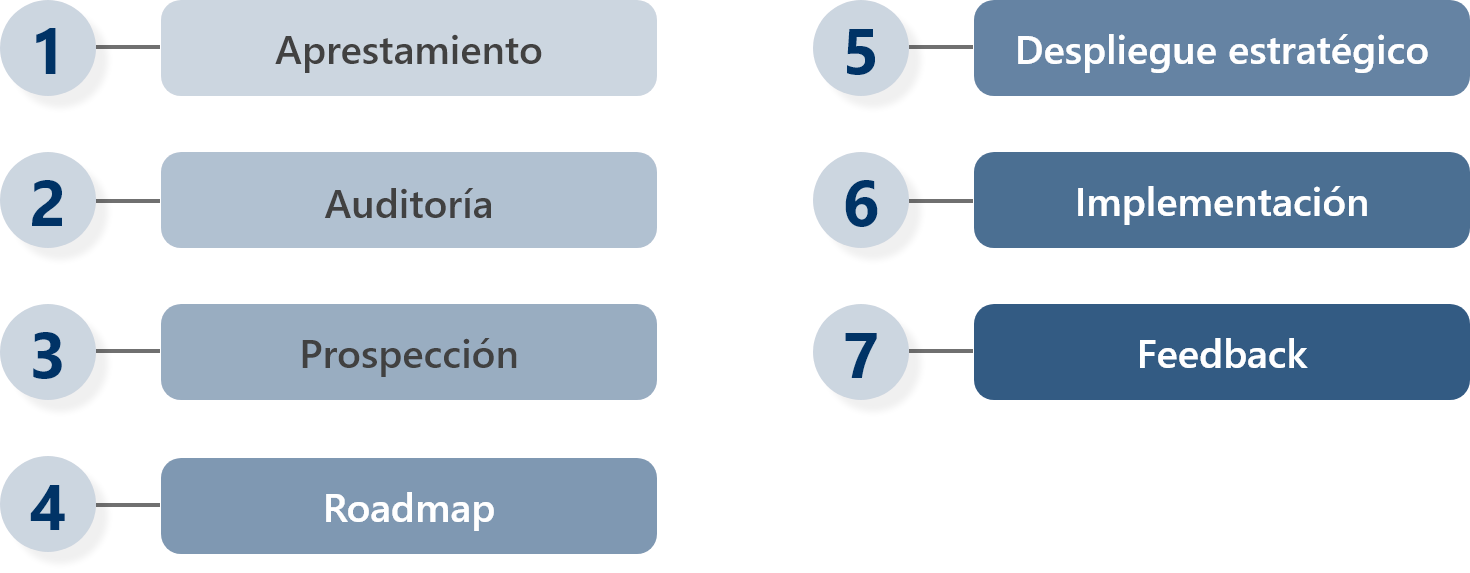
R+D+i Planning and Management.
We are experts in designing and developing strategies from the project formulation to its implementation.
Strategic direction of R+D+i
Objective:
Advise or guide public or private organizations in defining the strategic direction of R+D+i integrated into their corporate strategic architecture.
How do we do it?

Strengthening and consolidation of groups
Objective:
Advise Research, Technological Development and Innovation Groups and Centers in strengthening and consolidating their capacities for recognition and categorization within the National System of Competitiveness, Science, Technology and Innovation.
How do we do it?

Formulation of R+D+i projects - Tax benefits in CTeI
Objective:
Formulate and present R+D+i projects to access the following tax benefits:
1. Discount on income tax of up to 25% of the amount invested by the company in the R+D+i project.
2. Deduction of the total value of the investment made by the company in the R+D+i project.
How do we do it?


Intellectual property
We contribute to the strategic management of your intellectual creations.
Drafting and processing of patent applications
Objective:
1. Identify and evaluate creations with potential for protection through intellectual property.
2. Advance the process of drafting and processing patent applications.
How do we do it?
a. Identification and preliminary evaluation
intellectual creations.
b. Patentability concept
c. Drafting and processing of
patent applications
Design of institutional
intellectual property and transfer policies
Objective:
Design institutional policies that constitute a valuable tool for the strategic management of intellectual property, including principles, guidelines, powers and other regulations applicable to the generation, use and access to knowledge, in coordination with the processes of protection, observance, and transfer of intellectual property from universities, research centers and other institutions.
How do we do it?


Investigation
Find out about some of our research projects
A research case: Scientific Integrity - The Santurbán paramo case (2013 - 2016)
In modern societies, conflicts arise between the progress of the local economy and sustainable development. Science becomes a tool to resolve such tensions or even to avoid them. It opens the debate based on evidence to address the differences from which arguments can be affirmed or refuted, not simple perceptions. Scientific evidence has therefore begun to be used by public policymakers for their work. Although the epistemological logics of science and politics differ in their means and ends, in the 21st century, it is essential to identify elements of the interface between science and public policy to impact society favorably. One of those elements is scientific integrity.
By studying an emblematic case of tensions between the economy and sustainable development in Santander - Colombia, this research seeks to analyze the role of scientific integrity in public policy decision-making in the face of a socio-environmental conflict. This case is the first delimitation of the Páramo de Santurbán (2013-2016) in which various social actors intervened, producing agreements and tensions, some of which were based on scientific evidence.
Indeed, within the framework of the Santurbán delimitation process (which is currently in force), scientists, policymakers, judges, representatives of civil society and the productive sector actively participated in presenting their arguments for protecting or using natural resources. For this reason, this research had the quadruple helix of innovation as a theoretical framework that analyzes the interactions between State actors, companies, civil society and Academia.
This paper exposes the different definitions of scientific integrity, the debates and the epistemological positions in this regard. Then it presents the participation of each one of the actors in the case of Santurbán. Finally, it analyses these positions from the definitions of scientific integrity with which it addresses ethical, social, environmental and political issues. Based on these results, the researchers are building a document that identifies behaviors, logic, processes and procedures of scientific integrity or disintegrity that can be considered in future cases of socio-environmental conflicts.
PROJECT FINANCED BY MINCIENCIAS (contract 470/20)
The project funded by the European Union through the H2020 program seeks to collaborate between different institutions and organizations to generate a social impact. Riconfigure will contribute to public policy and the execution of research projects, taking as a fundamental pillar the global visibility of the current management in Colombia.
How will it be possible to achieve it?
Through the collaboration of the public administration, the private sector, civil society, universities and research centers, solutions will be proposed to complex problems such as sustainable energy, health care and other issues. Inclusive and responsible collaboration between all these sectors would be necessary to achieve profound changes in the future. For this purpose, the quadruple helix model that groups the four previously mentioned groups will be used.
Goals

Join new types of collaborations, avoiding blind spots and considering the different approaches of each sector.

Make alliances between sectors and try to make them prosper to take on possible challenges.

Create strength and representativeness within the environment.
Metodología
Information will be collected, through qualitative and quantitative methodology, seeking that each of the sectors contributes to the collaboration process on issues such as:
- The government structure.
- The collaboration process.
- The responsibility of innovations.
- The effect of social laboratory interventions as a method for studying the QHC (quadruple helix).
Why was AvanCiencia chosen to be part of this collaboration?
- To collaborate with Academia, government, business and civil society.
- Have a social impact of great potential.
- Provide continuity to the project.
- More actively include the different sectors and especially civil society.
- Acquire and contribute experience on current cases.
Please get in touch with us if you are interested in our Consulting and Research service.
